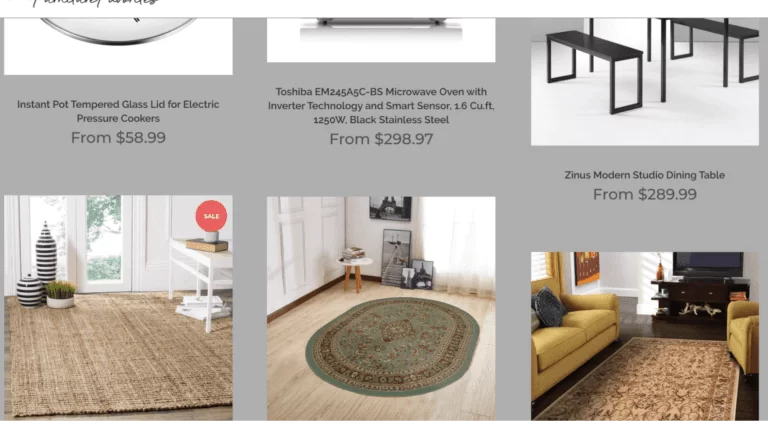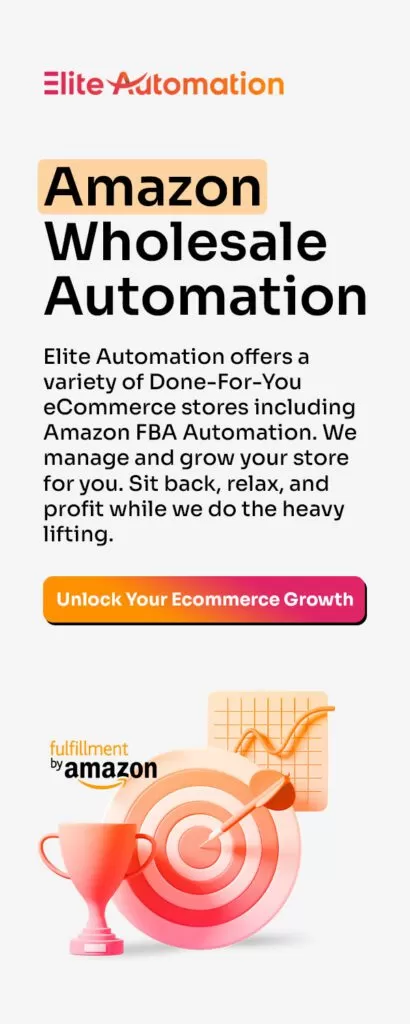Third party sellers are not being welcomed on many platforms. But how exactly can they be successful on online marketplaces? Here’s how.
To sell your product online, you need to have an audience. If you have your own website, you must build an audience through different techniques, such as email marketing and SEO. In addition, you would have to manufacture the products.
But what if you could skip all these steps and go right to selling? That’s where third party selling comes in.
Third party sellers purchase products made by another manufacturer or retailer and sell them on their own stores or marketplaces like Amazon. They can be both individuals or brands. Previously, the online marketplaces were very specific about only allowing manufacturers to sell their products.
However, many marketplaces, such as eBay and Amazon, allow third party sellers too, and more are on their way to allow third party selling. Lets’ explore this in detail.

Online Marketplaces that Allow Third Party Sellers
Currently, there are many online marketplaces that allow third party sales, such as Wish, Amazon, Walmart, Newegg, eBay, Wanelo, Poshmark, Etsy, and Facebook Marketplace. These marketplaces with third party sellers boast impressive sales.
For instance, in the 2018 shareholder letter, Jeff Bezos highlighted the increase of third party sales from 30% in 2008 to 58% in 2018. In the following years, third party sales grew even more abundant on the platform.
As a result, Amazon generated $80.5 billion in revenue from third party sales, which was a 50% increase from 2019. The biggest chunk of these sales can be attributed to discount days and special offers, such as Amazon Prime Day, Black Friday Sales, and Amazon’s Summer Sale.
At the moment, Amazon has two million third party sellers, and they account for 62% of the platform’s total sales.
Walmart
Amazon is not the only online marketplace benefitting from third party sales. The number of third party sellers on Walmart Marketplace has also increased exponentially in the past year.
In just 12 months, the marketplaces seller number doubled in size, reaching 100,000 sellers.
Last year in July 2020, the marketplace had 50,000 sellers, and Walmart reported having more than 100,000 sellers by July 2021.
eBay
According to Marketplace Pulse, there are 790,000 eBay stores, and the number seems to be increasing since the platform offers a lot of benefits to the sellers.
On average, a seller on eBay makes $43,500 a year, but the earnings can be as high as $72,035.
Etsy
In 2020, over 4.3 million sellers sold their products on Etsy, which was a massive increase from 2019, when only 2.7 million active sellers were present on the platform.
But this growth is nothing new as Etsy has seen a significant increase in the number of sellers in the past decade. In 2012, the platform only had 830,000 sellers, and they increased to 2.6 million in 2019.
It’s also easy to see the potential of the platform for third party sellers since there are 39.4 million active buyers in 234 countries.
Facebook Marketplace
The absence of any cost for listing products makes Facebook Marketplace different from other online marketplaces with sellers. Currently, the marketplace has a billion users with over a million shops.

What Retailers Might Start Allowing Third Party Sellers?
Traditional retail brands are now seeing the potential of third party selling and are building marketplaces for third party sellers.
For instance, Hudson’s Bay, a Canadian department store chain, came out with provisions for third party sellers to sell their products to customers through the company’s website.
Many other companies, such as Kroger, Anthropologie, and Urban Outfitters, have also made marketplaces to capture third party sales. But the most exciting opportunity for third party sellers that can come in recent times is from Target.
Target Plus
Target introduced Target Plus – a platform for third party sellers in 2019 with the aim of being different from Walmart and Amazon, where the competition is too high for some sellers to thrive.
However, Target Plus has an invite-only model with the company curating a selection of hand-picked sellers and brands and allowing them to sell to Target’s huge audience.
According to Target, here are the benefits of selling on Target Plus:
- Diversification: Sellers can diversify their revenue streams by leveraging the large audience Target already has.
- Less Competition: Since Target hand-picks sellers, there is FAR less competition as compared to Amazon that has millions of third party sellers.
- Brand Backing: Being the tenth largest retailer in the country and a popular household name, Target has earned a certain level of consumer trust that sellers can benefit from.
Home Depot
Another popular retailer that is opening its doors to selected third party sellers is Home Depot. Applicants must get everything right the first time they’re applying since Home Depot only allows re-applications after six months in order to maintain quality in the marketplace.
Sellers who show in their application that their products fit into the brand’s current product type are more likely to have their application accepted.

What is Fueling this Trend?
Third party selling is fueled by a number of factors, including the interest of brands in third party selling and the influx of Chinese sellers on the Amazon marketplace.
Amazon shut down its Chinese marketplace, but Chinese sellers are still increasing in number on other Amazon marketplaces, primarily the United States marketplace, offering products to 12 countries.
Since these sellers have cut out the distributors’ and wholesalers’ costs, they can offer much lower prices to customers, usually winning the sale in comparison to American sellers.
Secondly, more brands are shifting to these marketplaces, establishing their presence online. Seeing this increased competition, it’s likely that the trend will continue to grow in the coming years.
Final Words
While the Covid-19 pandemic negatively affected and disrupted many other industries, it benefitted the e-commerce industry substantially, raising the necessity to shop online. As a result, third party selling increased on online marketplaces, raising the revenue of those platforms.
Other marketplaces noticed this trend and have since opened their doors to selected third party sellers, and more are expected to follow suit in the future. To benefit from this trend, third party sellers will have to step up their game since large brands and “whales” are also entering the space.


